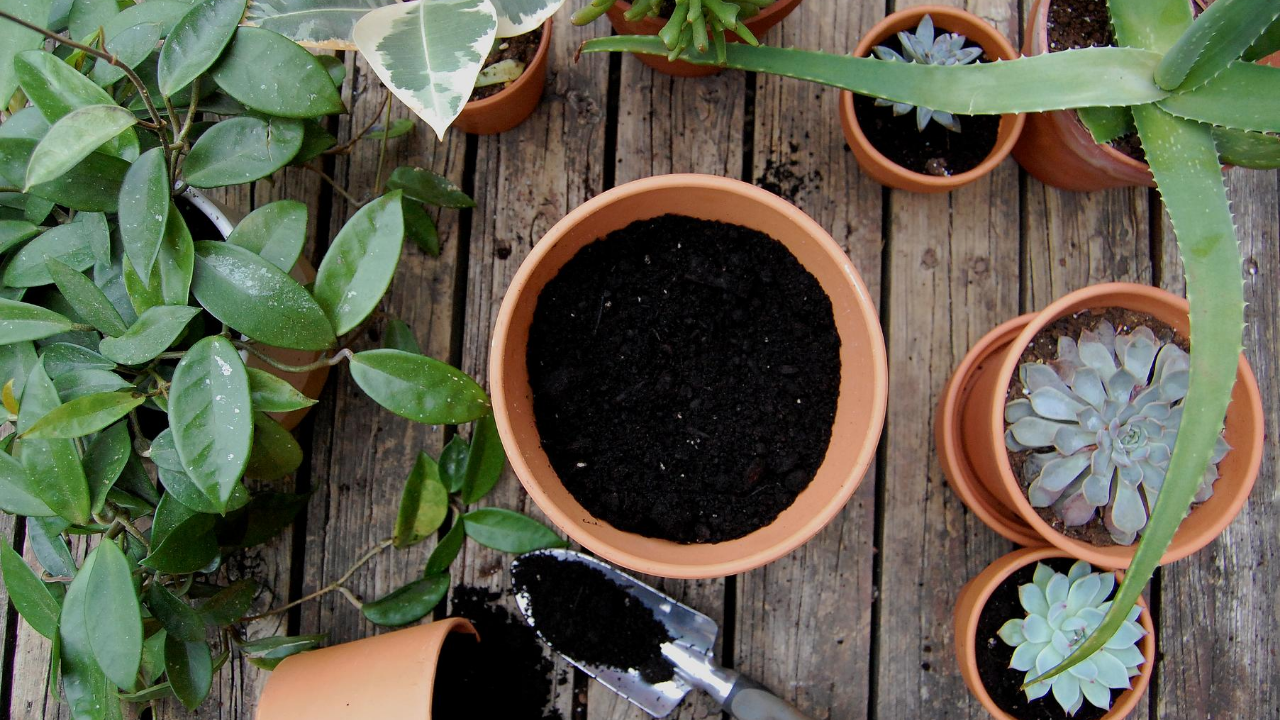
If you’ve been growing succulents in pots, you’ve probably been asking yourself whether they need to be repotted. This useful guide will answer your questions and teach you how to identify the reasons for repotting. Read on to learn how and when to repot succulents.
Why Should You Repot Succulents
There are several reasons why you should repot your succulents. They are quite straightforward, but we’ll explain why it’s important to repot your succulents in these situations.
You Bought a New Succulent
When you buy a new succulent, it is very important to replant it as soon as possible. The pot and the soil from the nurseries are usually not suitable in the long run. There are several reasons why you should repot your newly purchased succulents.
- When we buy a new plant, it’s often planted in a small container. These newly-bought plants often have a root bound, as well. Your succulent will probably outgrow these small-sized, disposable containers very soon, so it’s better to repot it right after the purchase.
- The succulents we buy in nurseries aren’t potted in the adequate soil, most of the time. You should plant your succulent in a potting mix that provides good drainage.
- Repotting your newly-bought plant gives you an opportunity to check your plant for pests and respond immediately.
- Repotting a succulent is also a perfect opportunity to check the roots of the plant and have a quick insight in its health. Even if a succulent looks perfectly fine, the roots could be unhealthy.
- And finally – aesthetics. You can choose a more suitable planter and ‘dress’ your succulent in a ‘robe’ you like.
Root-Bound and Outgrown Container

Just like any plant, a succulent can overgrow its pot. In that case, the roots don’t have enough space to grow and develop normally, and the entire plant will just stop growing. The succulent can become root-bound, with roots so tightly entangled that water can’t reach them. Sometimes the roots even stick out of the holes at the bottom of the pot.
Your succulent needs room to grow healthy. Repot your succulent in a larger pot and you will notice how your it will bounce back just in a few days.
Your Succulent Has Pests

As with any plants, the first sign of pest infestation is an alarming situation and you should act immediately. There are plenty of organic and safe ways to treat your infested succulents, but sometimes spraying the leaves just isn’t enough. Even if you treat your infested succulents with an insecticide, the infestation is usually set dip into the soil.
Often pests are hidden or they leg eggs in the soil. If you repot the infested succulent and plant them into new, fresh, and healthy soil, the chances for recovering are much better.
Succulent Has New Growth or Pups

Some succulent types like Gasteria, Haworthia, Echeveria, or Aloe, propagate through offsets also known as pups. When these pups emerge from the mother plant and become mature enough to be propagated, the pot can become a bit overcrowded.
In order to detach these new plants from the mother plant, you’ll need to dig up the entire plant. Cut or remove the pups carefully and plant each plant in a separated pot.
How Often Should You Repot Succulents
Every potted plant should be repotted now and then, even when there isn’t any particular reason for that. Most of the plants need repotting once or twice in year. The same goes for succulents.
Even if your plant is doing just fine, it would probably benefit from new soil. If you simply change the soil regularly, your succulent will get a bunch of beneficial nutrients from time to time.
When Should You Repot Succulents
Succulents should be repotted during their inactive growth season, but just before they’re about the enter their active season. Do not repot them during the dormancy phase or growing season. Of course, if a situation is serious like pest infestation and requires an immediate repotting, it’s better to repot at any time than to leave your succulent at the mercy of pests.
Summer-dormant succulents are regularly repotted in the fall while winter-dormant succulents should be repotted in the spring. This way a succulent will have some time to recover from the shock of replanting before the active growth season starts.
If your succulent is in its flowering stage, do not repot it.
How to Repot Succulents
Repotting a succulent is quite easy, but a few tips will help you to do this task properly.
- Preparation –You’ll need a clean tool like a trowel, or if you don’t have one, you can use a spoon or anything similar to dig up the plant. Maybe you’ll need a clean knife or scissors too. Prepare a new pot and new soil, of course. If you’re working with cacti, you will need protective gloves or a piece of paper so you could handle the succulents with sharp spines.
- Removing the succulent from the soil can be tricky, but it isn’t unmanageable. You can try to grab the plant at the lower part of the stem or any part that seems firmer. Turn the pot sideways, twist the plant gently or try to shake it a bit. You can turn the pot upside down, holding the succulent at the stem, and gently tap the bottom of the pot. Some succulents like Sedum rubrotinctum have very delicate leaves that detach at the lowest pressure, so be careful.
- Remove the soil – When you dig up the succulent, shake the excess soil off. Remove as much soil as possible. You can even use a gentle brush.
- Remove excess roots – When you take your succulent out from the pot, you will notice a tangle of roots. Some of them willsnap while you’re removing the soil, but you can remove a part of them intentionally. Some plants will actually benefit from this, especially if they have been root-bound.
- Remove lower and dead leaves – It’s totally normal for a succulent to have dead leaves, especially at the lower section of the stem. Remove these bottom leaves or any leaves that look unhealthy or dead. You can also take a few healthy lower leaves if a succulent propagates through the leaves.
- If you’re detaching the pups from the mother plant, separate them gently. Use a knife or scissors if needed.
- Add the soil into the pot and make a hole in it for your succulent. Pack the soil around the succulent and fill the pot. You can add stones or rocks on the top of the soil as a decoration.
- And last, but not least, let succulent roots heal before you water your newly-repotted plant. Leave the succulent dry for a day or two, and then water it thoroughly.
Are you interested in growing your very own Cacti and Succulents? We got our very own Cactus and Succulent grow kit for you that is available via our website or via Amazon.





